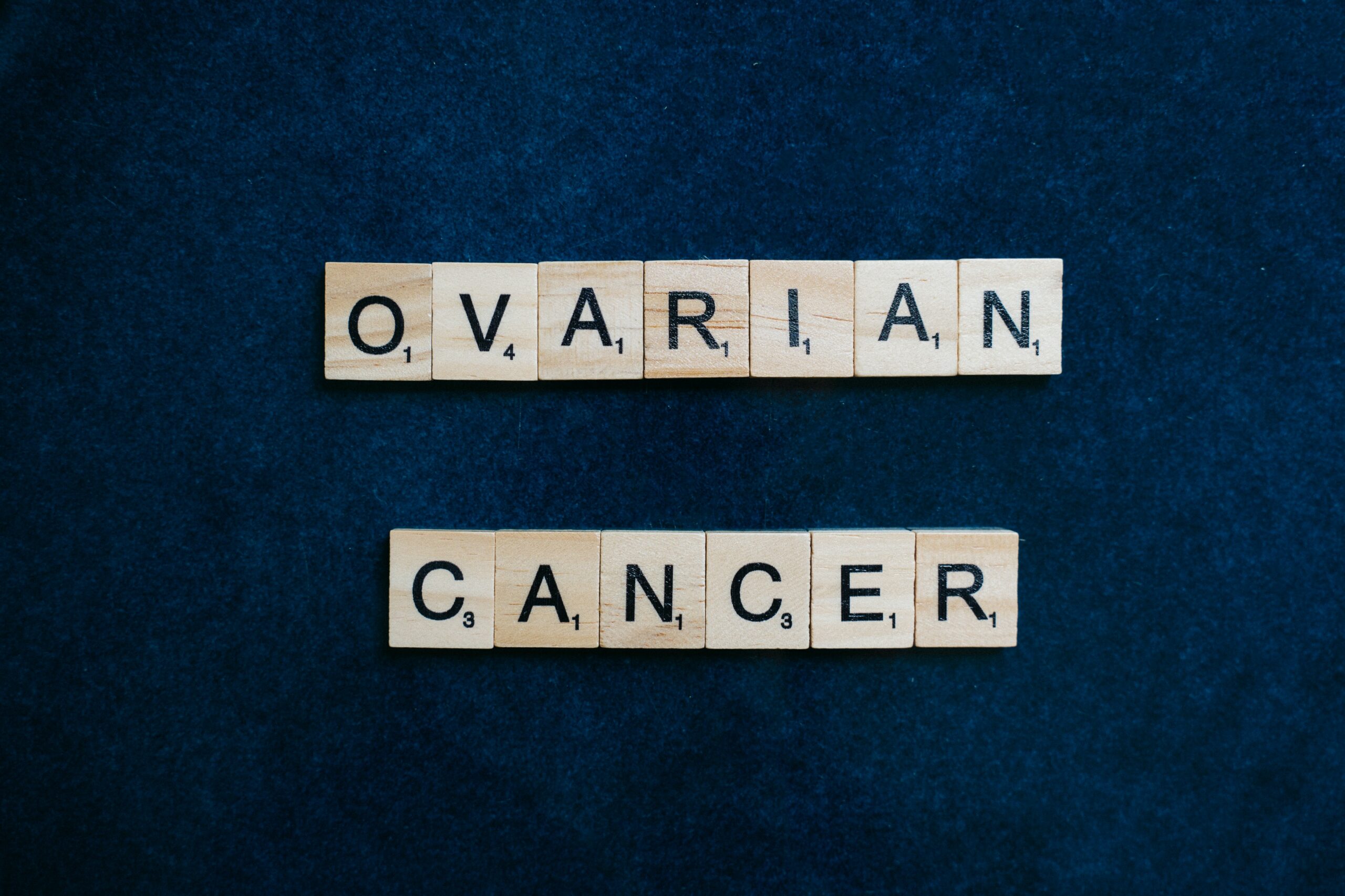September is Ovarian Cancer Awareness Month. Did you know that 1.3 percent of women will be diagnosed with ovarian cancer at some point in their life? According to data from the NCI’s Surveillance, Epidemiology, and End Results Program – an estimated 19,880 women in the United States will be diagnosed with ovarian cancer and 12,810 are expected to die from the disease in 2022.
However, ovarian cancer often goes untreated until the disease is in its advanced stages, and the survival rate is low, with a five-year relative survival rate of 49.7 percent.
What Is Ovarian Cancer?
Ovarian cancer is the growth of cells that form in the ovaries. These cells multiply quickly and invade and destroy healthy body tissue.
There are two ovaries in a female’s reproductive system, one on each side of the uterus. Each ovary is about the size of an almond and produces eggs (ova) along with the hormones estrogen and progesterone.
What Are The Symptoms Of Ovarian Cancer?
When ovarian cancer begins to develop, it may not cause any noticeable symptoms. As ovarian cancer symptoms occur, they are often attributed to other, more common conditions.
Signs and symptoms of ovarian cancer can include:
- Swelling or bloating of the abdominal area
- Feeling full suddenly when eating
- Weight loss
- Discomfort or pain in the pelvic area
- Feeling more fatigued than usual
- Back pain
- Changes in bowel habits, such as constipation
- Feeling the need to urinate frequently
Types Of Ovarian Cancer
Generally, the type of cell where cancer begins will determine the type of ovarian cancer you have. This also helps your doctor determine which treatments are best for you.
- Epithelial ovarian cancer. It includes several subtypes, including serous carcinoma and mucinous carcinoma.
- Stromal tumors. Rare tumors are usually diagnosed at an earlier stage than other ovarian cancers.
- Germ cell tumors. Rare ovarian cancers tend to occur at a younger age.
What Are Some Of The Risk Factors?
Factors that can increase your risk include:
- As you age the risk of ovarian cancer increases. Most often diagnosed in older adults.
- There is a small percentage of ovarian cancers that are caused by gene changes you inherit from your parents. The BRCA1 and BRCA2 genes increase the risk. These are also the genes that increase the risk of breast cancer. Lynch syndrome and the genes BRIP1, RAD51C, and RAD51D are also known to increase the risk of cancer.
- If any of your blood relatives have been diagnosed with ovarian cancer, this can also increase the risk of the disease.
- Being overweight or obese increases the risk.
- Hormone replacement therapy to control menopause signs and symptoms may increase the risk of ovarian cancer.
- Endometriosis is an often painful disorder in which tissue similar to the tissue that lines the inside of your uterus grows outside your uterus.
- Beginning menstruation at an early age or starting menopause at a later age, or even both, may increase the risk of ovarian cancer.
- If you have never been pregnant, you may have an increased risk of ovarian cancer.
Ways To Reduce Your Risk Of Ovarian Cancer
- Birth control pills. Ask your doctor whether birth control pills (contraceptives) may be right for you. Taking birth control pills may reduce the risk of ovarian cancer. These medications also have risks. Discuss with your doctor whether the benefits outweigh those risks in your situation.
- Discuss your family history with your doctor to determine risk factors. If there is a family history of breast and ovarian cancers, discuss this with your doctor. Your doctor may refer you to a genetic counselor who can help you decide whether genetic testing may be right for you.
Tests and procedures used to diagnose ovarian cancer:
- Pelvic exam. During your pelvic exam, your doctor inserts gloved fingers into your vagina, while pressing a hand on your abdomen in order to feel (palpate) your pelvic organs. At this time your doctor may also visually examine the external genitalia, vagina, and cervix.
- Imaging tests. An ultrasound or CT scan of your abdomen and pelvis may help to determine the size, shape, and structure of your ovaries.
- Blood tests. Blood tests that include organ function tests can help to determine your overall health.
Your blood may be tested for tumor markers that indicate ovarian cancer. For example, a cancer antigen (CA) 125 test can detect a protein that’s often found on the surface of ovarian cancer cells. However, these tests can’t determine whether you have cancer or not, but they may provide clues about your diagnosis and prognosis. - Surgery. Undergoing surgery to remove an ovary and having it tested for signs of cancer can be the best way to determine a diagnosis.
- Genetic testing. Testing a sample of your blood to look for gene changes that increase the risk of ovarian cancer. This can help to determine your treatment plan when you know you have an inherited change in your DNA. It may also be a good idea to share the information with your blood relatives, since they may be at risk of having the same gene changes.
If it is confirmed that ovarian cancer is detected, your doctor will use information from your tests and procedures to assign cancer a stage. The stages range from 1 to 4, which are often indicated with Roman numerals I to IV. The lowest stage will indicate that the cancer is confined to the ovaries. If it is stage 4, cancer has spread to distant areas of the body.
Treatment
Surgery
Operations to remove ovarian cancer include:
- Surgery to remove one ovary. This is generally for early-stage cancer that hasn’t spread beyond one ovary, surgery may involve removing the affected ovary and its fallopian tube.
- Surgery to remove both ovaries. If cancer is present in both ovaries, but there are no signs of additional cancer, your surgeon may remove both ovaries and both fallopian tubes.
- Surgery to remove both ovaries and the uterus. If the cancer is more extensive or you don’t wish to protect your chances of having children, your surgeon will remove the ovaries, the fallopian tubes, the uterus, nearby lymph nodes, and a fold of fatty abdominal tissue (omentum).
- Surgery for advanced cancer. If your cancer is advanced, your doctor may recommend surgery to remove as much of cancer as possible. In this case, chemotherapy can be offered before or after surgery.
Chemotherapy
This is a drug treatment that uses chemicals to kill fast-growing cells in the body, including cancer cells. Chemotherapy drugs can be administered by injecting into a vein or taken by mouth.
Targeted therapy
Targeted drug treatments focus on the specific weaknesses that are present within cancer cells. By attacking those weaknesses, targeted drug treatments can result in cancer cells dying.
Hormone therapy
Some ovarian cancer cells use estrogen to help them grow, hormone therapy uses drugs to block the effects of the hormone estrogen on ovarian cancer cells.
Immunotherapy
Immunotherapy engages the immune system to fight cancer. The body’s disease-fighting immune system may not generally attack cancer cells on its own because they produce proteins that help them hide from the immune system cells.
Supportive (palliative) care
Palliative care is specialized medical care that focuses on providing relief from pain and other symptoms of a serious illness. This type of care is provided by a team of doctors, nurses, and other specially trained professionals. A palliative care team’s goal is to improve the quality of life for people with cancer and their families. It is often offered alongside curative or other treatments you may receive.
Be proactive and keep up with your annual exams. If you have any concerns or are showing any symptoms, schedule an appointment to see your doctor as soon as possible. Here at OB-GYN Women’s Centre of Lakewood Ranch, we are here to help you with any concerns you may have about your reproductive health.




